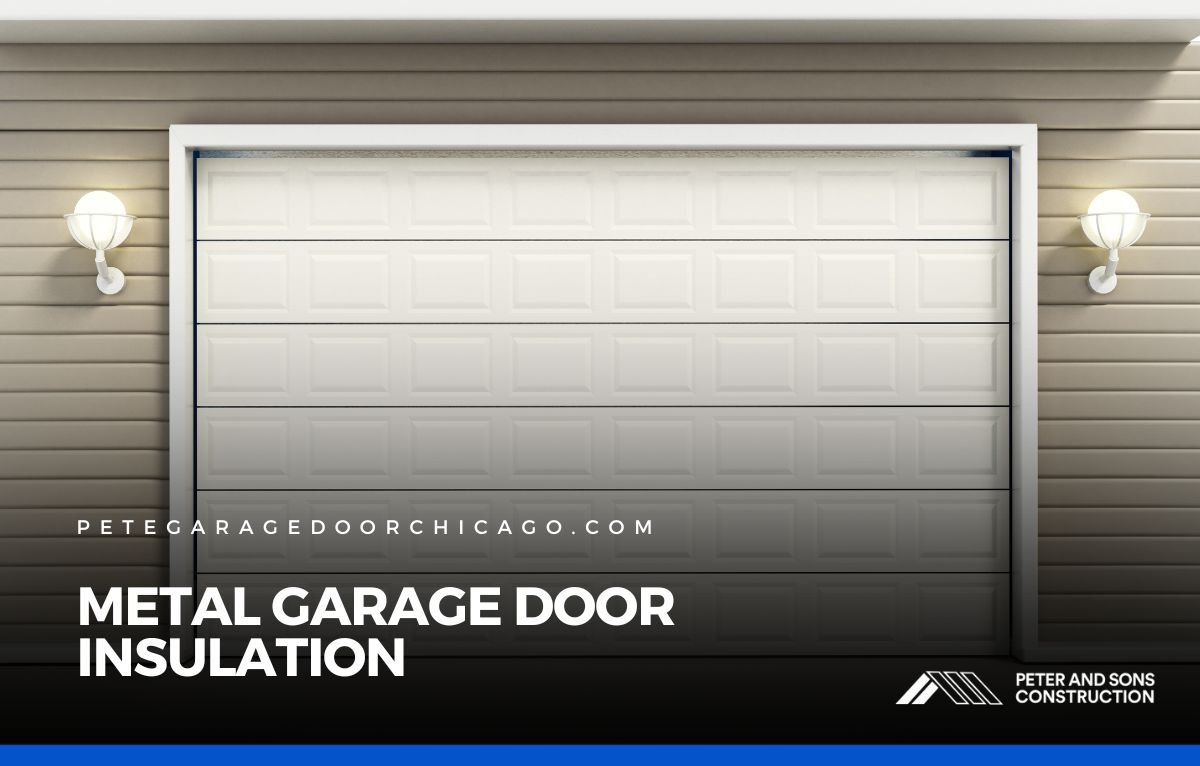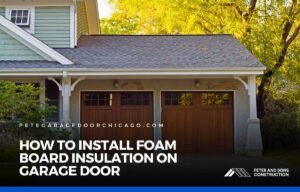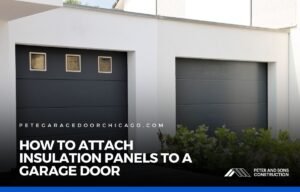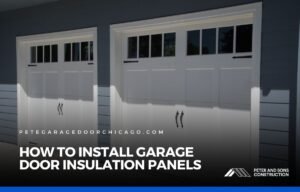Tired of a Freezing or Boiling Garage? Insulate That Metal Door
- Editorial Team
- September 28, 2025
- 9:14 pm

A metal garage door without insulation turns your garage into an oven in summer and an icebox in winter. Heat transfers through the panels fast, making it tough to control temperature or protect anything stored inside. If the space feels unbearable during extreme weather or your utility bills keep climbing, the door could be the weak spot. Insulating it improves comfort, saves energy, and makes your garage usable year-round.
We’re breaking down how metal garage door insulation actually delivers results—no gimmicks, no shortcuts.
Why Metal Garage Doors Lose Heat Fast
Metal conducts heat fast. That means cold air gets pulled in during winter and heat soaks through in summer. With no resistance, the temperature inside your garage changes quickly, making the space uncomfortable or even unusable.
Most basic metal doors are single-layer steel or aluminum with no backing. Once the outside temperature shifts, the inside does too. If your garage shares a wall with your home, it also affects the indoor temperature next to it.
Uninsulated metal also amplifies noise. Traffic, wind, and outdoor sounds transfer right through. So without insulation, your garage isn’t just losing comfort; it’s losing control.
Signs You Need to Insulate Your Metal Garage Door
Most homeowners notice these problems long before they realize what’s causing them. If you’re dealing with any of the following, metal garage door insulation may be overdue:
- Your garage gets too hot or cold depending on the season
- The interior wall next to the garage is drafty
- Stored items are getting moisture damage or warping
- You hear street noise or wind loud and clear through the garage door
- Your energy bills are rising and your HVAC system is working harder
Insulating the rest of your home but skipping the garage door is like wearing a winter coat with no zipper. It’s almost working, but not enough.
What Makes Good Garage Door Insulation?
There’s more than one way to insulate a metal door, but some materials do a better job depending on your goal. The top three options for metal garage door insulation are:
Rigid Foam Panels
These offer the highest R-value per inch. They’re cut to fit and glued directly to the garage door panels. The result is a clean look and long-lasting performance.
Reflective Foil Insulation
Best for hot climates, this foil-faced barrier reflects heat away from the surface. It doesn’t absorb heat—it deflects it. Not ideal for winter climates, but helpful in warmer regions.
Garage Door Insulation Kits
These pre-measured systems include foam boards or batting with clips or adhesives. They’re fast to install but may not last as long without reinforcement.
If your goal is noise reduction, rigid foam does better than foil. If your goal is blocking radiant heat in summer, foil might be worth it. But if you’re dealing with both heat and cold throughout the year, foam panel systems offer the most balance.
How to Install Metal Garage Door Insulation the Right Way
Before you install anything, make sure the surface is clean. Dirt, oil, or spider webs will prevent adhesives from sticking. Use a degreaser and a dry cloth to wipe down each panel.
Start by measuring each section of your garage door. Most doors have several horizontal panels, each with its own recessed area. Cut the insulation material slightly smaller than each space so it sits snug but doesn’t bulge. Use high-strength adhesive or mechanical fasteners made for garage doors.
If you’re using a kit, follow instructions carefully. A loose fit won’t work long-term, and poor placement can interfere with your door’s operation.
When in doubt, call in a pro. Insulating garage doors isn’t a high-risk job, but a bad install can cause binding, misalignment, or even damage to your opener system.
Why Metal Garage Door Insulation is Worth It
People don’t always think about garage doors when upgrading insulation. That’s a mistake. Insulating a metal garage door improves comfort and efficiency across the board.
- Keeps heat inside during winter and blocks it in summer
- Reduces energy costs by up to 15% when combined with wall insulation
- Protects stored items from extreme temperature swings
- Lowers noise from outside traffic or wind
- Makes the garage more usable for hobbies or work year-round
You don’t have to fully convert your garage into a finished room to make insulation worth it. Even a simple panel upgrade can help your home perform better and feel more comfortable.
Metal vs. Wood: Why Metal Doors Need Extra Help
Wood is naturally thicker and more resistant to temperature changes than metal. Even without insulation, it slows heat loss better and absorbs sound more effectively. Metal, while stronger and lower maintenance, doesn’t offer that built-in buffer.
A metal garage door needs insulation to stay balanced. Without it, heat and cold pass through fast, and condensation can build up on the inside surface. That leads to moisture issues and rising energy costs.
If your garage came with a basic metal door, odds are it was installed without insulation. That gap is what separates a well-functioning space from one that constantly leaks air and noise.
Don’t Let Your Garage Door Work Against You
Metal garage door insulation isn’t about overbuilding. It’s about controlling what you can and making sure your home runs smarter. If you want quieter mornings, lower energy bills, and better protection for your garage gear, insulating the door is a smart move.
If you’re not sure what type of insulation fits your garage or don’t want to deal with uneven cuts and messy adhesives, Peter and Sons can help. We’ve insulated hundreds of metal garage doors across Chicago—clean installs, no guessing, and materials that last. We treat your garage like part of your home, because that’s exactly what it is.



